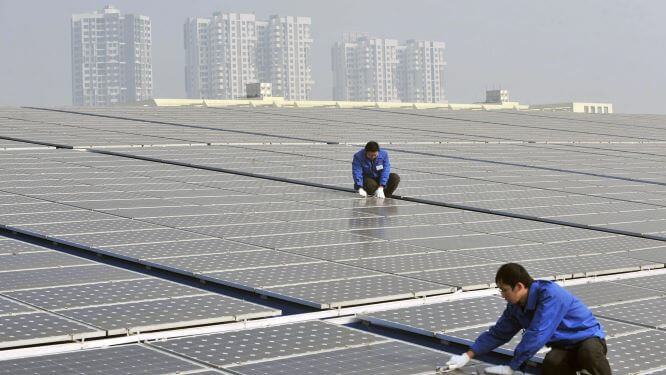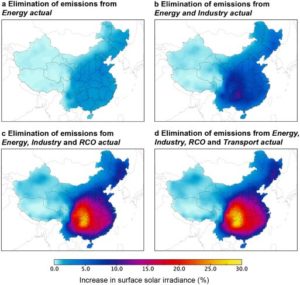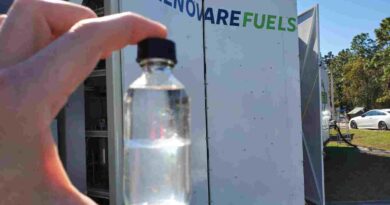Air Pollution is Choking Solar Energy Generation in China, Says Study
An International study shows that reducing air pollution is not only an important health and environmental policy, but can also be an important solar power policy measure.

Air pollution and Smog in China has become so bad that it is becoming harder to see the sun. And for its dream to become the world’s leader in Renewable energy, Smog can become its biggest nightmare.
China’s record-breaking air pollution is getting in the way of its booming solar sector, which could produce more clean energy only if there were cleaner skies. Air pollution reduces the solar radiation that effectively reaches solar panels, reducing the power generation of the PV fleet.
According to a study by PLOS One Study called “Blue skies over China”, Researchers at the Swiss Federal Institute of Technology in Zurich put numbers to that: If China pushed an aggressive set of policies aimed at curbing air pollution from its fossil fuel powered sector to nearly ZERO, the fleet of its photovoltaic solar panels could generate nearly 160 Terawatts per year of extra energy, by 2040. This will be an additional $7-10 Billion dollars saved -in addition to saving millions of lives as an incentive.

“China is the world leader in installing solar photovoltaics, and at the same time, it’s the country that is suffering the most from air pollution. A lot of the country’s air pollution stems from the burning of fossil fuels, namely coal—for which China also happens to be the world’s largest consumer ,” says Mercè Labordena, a renewable energy researcher and lead author on the study.
Air pollution is the largest environmental cause of health damage and premature death in the world. More than 90% of the world’s population lives in places where air pollution levels surpass the limits specified by the World Health Organization (WHO).
In the case of China, almost every major Chinese city exceeds the limits for air pollutants recommended by the WHO, leading to some 1.1–1.6 million premature deaths annually.
To control air pollution and greenhouse gas emissions, China aims to consume 20% of its primary energy from non-fossil sources by 2030, for which renewable energy sources are crucial.
The more clutter there is in the sky, the less solar radiation reaches the hungry surface of solar panels. Particles like sulfates can reflect radiation, and others like black carbon absorb it before it reaches the ground. “There’s no question—you get the particulates out of the air, you get more solar,” says Dan Kammen, professor of energy at the University of California, Berkeley.

But the solution isn’t exactly cheap: China would have to spend between $50 and $70 billion to curb its air pollution to that extent. The extra cash from thriving solar panels would at least offset 17% of these costs, the researchers estimated. And even smaller reductions in air pollution would benefit the solar industry and public health.
The problem is by no means restricted to China. Photovoltaic panels in major cities like Delhi and Singapore also suffer under hazy skies, too. In Delhi, for instance, it causes silicon solar panels to see around 12 percent less sun than they would in cleaner air. Nor is the issue limited to fossil fuels. Each region has its own particular blend of particulates in the air, not all of which is of direct human origin like forest wildfires are the cause of California’s air pollution.
Nevertheless, researchers hope that the world continues to adopt Renewable energy sources like solar- they will eventually trigger a positive feedback loop: the more solar power is installed, the cleaner the air will become, and the more energy the panels will generate, the less reliant the countries will become on coal. This will eventually help the World to get rid of fossil fuel powered projects.
Picture credit: Quartz




